 The element of mystery has always been an integral part of the art world, The disappearance of Fernando Garcia is one of those mysteries in that world that cries out for resolution. His voluminous body of work, the joy of viewing it and it’s potential influence on generations of artists has slipped away, mysteriously.
The element of mystery has always been an integral part of the art world, The disappearance of Fernando Garcia is one of those mysteries in that world that cries out for resolution. His voluminous body of work, the joy of viewing it and it’s potential influence on generations of artists has slipped away, mysteriously.
We have lost the opportunity to know the artist and the man, himself. It is that intimacy with the artist what generally forms the adhesive that binds us to a work of art. But the artist has physically disappeared and for the time being, the torch has been extinguished.
Garcia was a most influential contemporary artist. He was incredibly prolific – leaving a legacy of thousands of pieces, in a wide variety of mediums. Much of his art was multidimensional and ground-breaking, setting precedents for the Miami arts, but without attribution because, mysteriously – he has disappeared.
In order to solve the mystery of his disappearance, we must follow a trail that starts in 1961, the year when he entered the United States from Cuba. After his extremely sheltered existence in his homeland, he arrived in America as a modern version of “Pedro or Peter Pan.” He would remain throughout his life forever young, forever free and always clapping his hands through his art to dispel all things negative. He even found a Wendy to tend to the child in him; his closest friend for 17 years, Nancy Clark.
It is clear that from the beginning of his new life in America, Fernando was regarded as a very special person. His physical beauty and never ending laughter; the intelligence shining in his eyes, and his boundless joy of life and love touched everyone he came in contact with.
He attended the University of Georgia, graduating at the top of his class, with a degrees in physics and mathematics. His exceptional ability in these areas was to be expressed most strongly in his art.
It was in Atlanta that his powerful artistic talent roared to the surface. David Heath, of Heath Galleries, recognized his raw potential and urged him to legitimize his work by pursuing a fine arts degree. He graduated from Georgia State University with honors and began his first series of art installations at Heath Galleries. It was here that his fascination with time and mathematics started to appear in his work. His “Calendar” series was a brilliant, personal diary of his day to day life – a coded record that revealed all.
Fernando viewed Miami as a stifling place of Cuban asylum early in his life. But. when he returned, after partying and painting in Atlanta and playing the starving artist in New York, it seemed to him to be a place of unlimited possibilities.
At this point in our story several deductions can be made. First, Fernando Garcia was blessed with the gifts of a charismatic personality and great talent. Second, he regarded himself as above the rules that governed the less gifted. Third, combining his Peter Pan aura, his Pan-like seductiveness, his mischievous nature and his powerful command of mathematics and physics, he could play at a higher level than most others. And, he used his art to beguile, but not to enlighten.
Now suddenly, here in Miami, there came an epiphany moment when the seducer became the seduced. We can speculate that it was the power and depth of his multidimensional creative skills, combined with the vastness of his medium of expression, that finally enfolded and intoxicated him. His art took on a new urgency and level of commitment and began to flow in copious proportions. His gifts seemed to coalesce, and what had previously been a game became his life’s work.
{mospagebreak}
His surprisingly unlikely mix of colors stunned and delighted his audiences. He sculpted with a passion. He enfolded the metaphysical science of plastic time values in his “Daylight” series, creating a perfectly calibrated, vibrant image of 24 hours with total precision, locked forever on canvas.
To celebrate his multidimensional Erotic Art Exhibit he covered naked bodies, including his own, with vibrant hues and thrust them against pure white sheets, leaving their imprints on a flowing, living surface.
The outpouring and quality of his work vaulted him to new levels of recognition in the South Florida art community. The Dade County Goverment commissioned him to create celebratory pieces for the opening of the Miami Art Museum Library Complex. He gathered enormous weather balloons, covered them with brightly colored symbols, set them aloft and anchored them to piles of material that explained the meaning of each “spheres”. These spheres were to be added to and used each year. Tragically, typically, they have been destroyed.
He then created a vivid and complex neon fantasy piece, “Making Purple” for the Okeechobee Metro Rail Station. Two stories height shafts of neon combined red and blue; blending them to make purple – in a flowing, ever changing cycle. Through neglect and hurricanes, this too has been lost. “Peter Pan” clapped his hands when the Miami jazz musicians collectively were scornfully referred to as “Jazz Babies” by music critic from a local Miami magazine. The negatively charged criticism was transformed by Fernando into multi-colored batons, or bars. He deflected the slight by pointing at his delightful creations and calling them, not the musicians, the true Jazz Babies.
His later work was geometrically driven pieces, as he seemed to return to mathematical discipline. And, finally, as his eyesight failed and death approached, his last pieces were black dominated canvasses representing his final exit. We are told that they were not self-pitying exercises, but rather the result of his blindness. He was painting what he could see.
In 1989, Fernando Garcia died, sucked down by the cold and powerful currents of the black hole of AIDS, a gravity in our universe so strong that only a soft wail of mourning escapes.
This is not the end of our mystery however. The mysterious disappearance of Fernando Garcia has to do with the evaporation of his legacy, not his death. How can an artist like him not be celebrated and exalted less than 20 years after his passing? The answer to the mystery lies in the tragedy of the times. So many vital, creative souls were lost to the plague that the resulting pain reached a numbing level. The collective vision of the mourners was blurred by the endless tears. And memories of the disappeared great minds and talents were washed away in the flood.
Today, knowledgeable private collectors hold Fernando Garcia’s works tightly in their grasp; knowing that the value of the pieces will grow exponentially over time. Those who knew, admired and supported Fernando Garcia are coming forward to share their memories, the art and their love. They seem to realize that now more than ever we need his artistic and joyful presence. With each arrival, his spirit rises again.
By Neil Myers

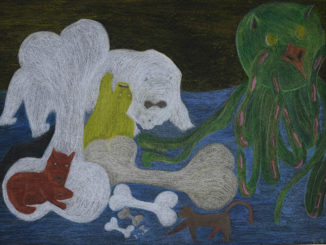
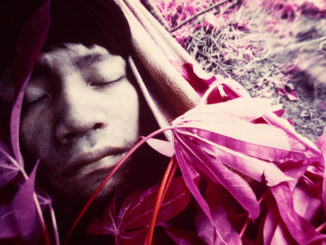
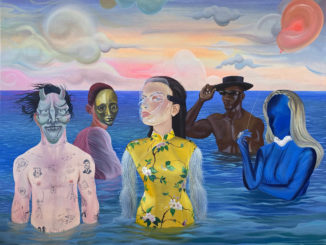
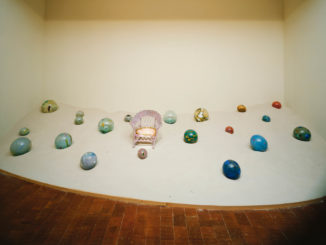
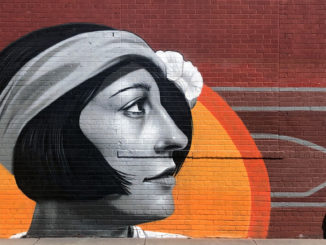
Be the first to comment